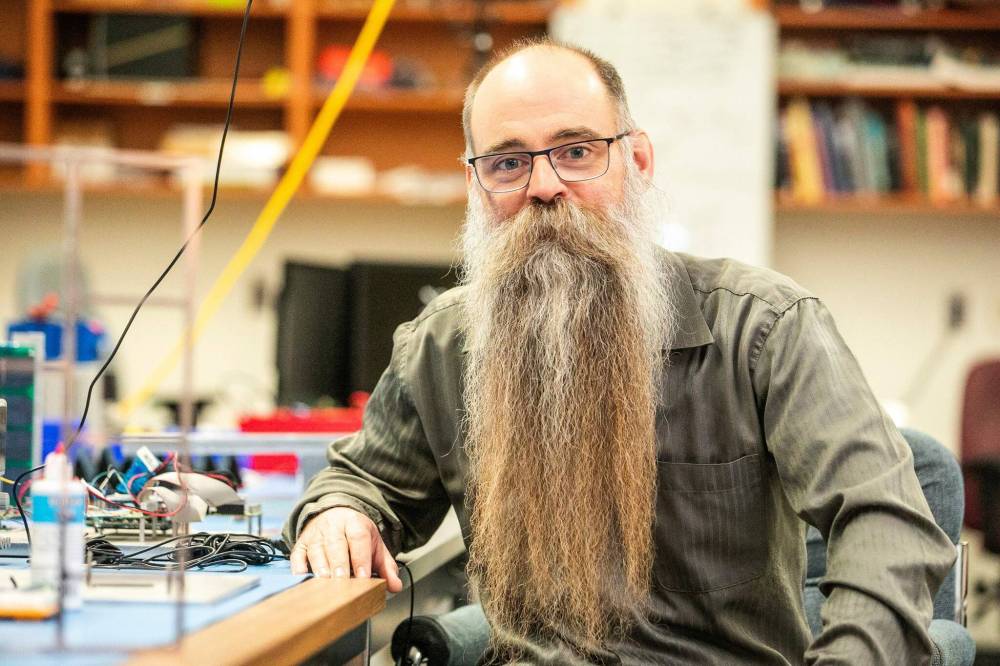U of M over the moon about satellite’s lunar launch
Advertisement
Read this article for free:
or
Already have an account? Log in here »
To continue reading, please subscribe:
Monthly Digital Subscription
$0 for the first 4 weeks*
- Enjoy unlimited reading on winnipegfreepress.com
- Read the E-Edition, our digital replica newspaper
- Access News Break, our award-winning app
- Play interactive puzzles
*No charge for 4 weeks then price increases to the regular rate of $19.00 plus GST every four weeks. Offer available to new and qualified returning subscribers only. Cancel any time.
Monthly Digital Subscription
$4.75/week*
- Enjoy unlimited reading on winnipegfreepress.com
- Read the E-Edition, our digital replica newspaper
- Access News Break, our award-winning app
- Play interactive puzzles
*Billed as $19 plus GST every four weeks. Cancel any time.
To continue reading, please subscribe:
Add Free Press access to your Brandon Sun subscription for only an additional
$1 for the first 4 weeks*
*Your next subscription payment will increase by $1.00 and you will be charged $16.99 plus GST for four weeks. After four weeks, your payment will increase to $23.99 plus GST every four weeks.
Read unlimited articles for free today:
or
Already have an account? Log in here »
A milk-carton sized satellite built by Manitoba researchers will go where no Canadian spacecraft has gone before — the moon’s orbit.
Magellan Aerospace’s Winnipeg division announced last week it had received a $6.9-million contract from the Canadian Space Agency to develop the lunar exploration spacecraft. University of Manitoba STARLab researchers are developing the CubeSat — a pint-sized satellite that will orbit the moon and launch a dart-like piece of tech to the moon’s surface to collect data to send back to scientists.
A U of M satellite was sent to space in 2023, but it remained in low Earth orbit.

“This is a completely different level. This is actually leaving Earth’s orbit and going into lunar orbit,” STARLab director and associate professor Philip Ferguson said. “It’s the first time Canada’s ever done that with a small satellite.”
It may be a small satellite for space, but it’s a giant step in Canadian lunar exploration, Ferguson said.
“We’ve got this renewed push now to explore the moon, to understand the resources, the different kinds of critical minerals that it has to offer, but then also look to the moon as a potential staging area for future missions to Mars,” he said.
“So, this is an important step for Canada’s strategic space exploration plan, and we’re thrilled to be a part of it here in Manitoba.”
The satellite is set to launch in late 2027.
While south of the border, the U.S. administration is proposing a 25 per cent cut to NASA funding, Canada is bringing in young minds and different industries to become a leader in space exploration, said Andrew Bowman, a PhD student who is working on the satellite project.
“I think there’s a niche opening up that we can fill really well,” he said.
“And I think that by letting and by giving these contracts to not just industry, but a combination of industry and academia and university, and getting people from the undergraduate, even high school level, up to the PhD level and beyond, involved in these missions in a very, very, very literal way, I think it’s a great way that we’re going to build up and have the possibility to become a bigger player in the space industry.”
The U of M lab is working with the Manitoba First Nations Educational Resource Centre, along with educator and storyteller Rockford McKay, to integrate Indigenous knowledge into the project, including working with students to understand the overlaps between western space engineering tech and the First Nations tradition of using star systems to navigate the land.
Ferguson noted that when a spacecraft orbits the earth, researchers can use GPS systems to help navigate. When a satellite is on the moon, that changes.
“We are at the mercy of visual navigation, looking at landmarks to navigate, and of course, looking at stars to navigate,” he said. “These are things that Indigenous explorers have been using for centuries.”
malak.abas@freepress.mb.ca

Malak Abas is a city reporter at the Free Press. Born and raised in Winnipeg’s North End, she led the campus paper at the University of Manitoba before joining the Free Press in 2020. Read more about Malak.
Every piece of reporting Malak produces is reviewed by an editing team before it is posted online or published in print — part of the Free Press‘s tradition, since 1872, of producing reliable independent journalism. Read more about Free Press’s history and mandate, and learn how our newsroom operates.
Our newsroom depends on a growing audience of readers to power our journalism. If you are not a paid reader, please consider becoming a subscriber.
Our newsroom depends on its audience of readers to power our journalism. Thank you for your support.

